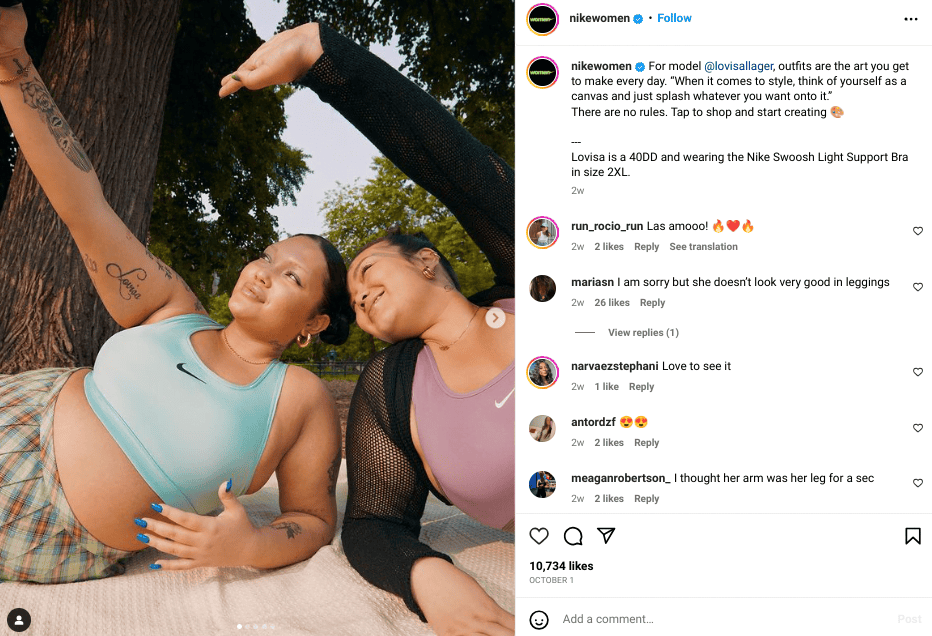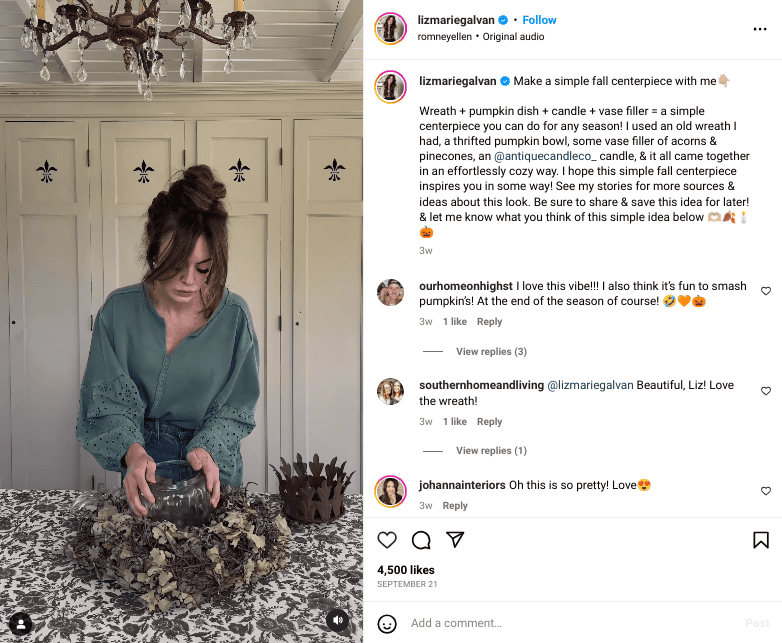Social networking sites have become indispensable marketing channels with the rise in social commerce. However, publishing engaging content isn’t enough to grow.
Remember, modern customers don’t get swayed by generic ads — they trust people. That’s where influencer partnerships can help. By partnering with them, you can create a community and make your product and services attractive to your target audience.
Whether you are a small business or a renowned brand, every brand is investing in influencer partnerships. Reports even projected it to grow to $21.1 billion in 2023.
But every influencer won’t be the right fit. Their image has to align with your brand identity, target audience, and product. Your chosen creator should also fit your budget and have a proven track record.
But how do you evaluate it and opt for the best influencer partnerships?
Let’s discuss.
How to evaluate influencer partnerships for your brand
Here are some ways you can gauge influencer partnerships:
Aligning brand goals with influencer strengths
Not all influencers with an avid following are the right marketing partners for you. Their strengths should favor your brand goals and objectives to become a successful collaboration.
For that, start by clearly outlining your influencer marketing goals and objectives. Some common ones include:
- Amplifying brand awareness and visibility
- Enhancing brand image
- Tap into new audience segments
- Boosting conversion rate
- Collecting conclusive customer data
Assess their journey to see how their work evolved on social media. Check their following, how they engage with their audience, and the response their content gets.
Compare the potential influencer with others in your industry. Determine whether they stand out in engagement, performance, and unique selling points.
Once you know your potential influencers’ strengths, tally them against your objectives and see how well the two align. It will give your influencer evaluation a proper direction.
Holger Sindbaek, the founder of Online Solitaire, says, “When I started influencer partnerships, I was eager to collaborate with anyone who had a significant following. But soon, I realized that numbers alone don’t guarantee success. I took a step back and re-evaluated. I thought about the essence of Solitaire – it’s strategic, timeless, and requires patience. I then sought out influencers who embodied these traits, those who genuinely enjoyed strategy games and had an audience that resonated with our brand’s core values. The shift was transformative. Instead of just getting visibility, we started getting engagement. If there’s one piece of advice I’d give, it’s this: Don’t just look at the influencer’s reach; align with those who mirror your brand’s soul.
Segmenting your audience for influencer targeting
With so many influencer campaigns popping up, you must ensure your efforts are targeted and impactful. By segmenting your audience, you understand what appeals to each group. It gives you an idea of how to personalize the experiences and identify influencers who fit the role.
For example, you have a lifestyle brand focusing on sustainable beauty and fitness products. You are looking to enhance your visibility among the fitness and beauty enthusiasts.
By segmenting them, you can partner with separate fitness and beauty influencers that appeal to your targeted demographics. It improves your chances of appealing to both segments’ specific needs and interests and betters your influencer marketing ROI.
Collect and analyze first-party and third-party customer data. Then, create different audience personas based on the following demographics.
Here are some demographics to consider while creating ideal buyer personas:
- Age
- Gender
- Location
- Hobbies and interests
- Preferred social media channels
- Ethnicity and religion
- Shopping patterns
Divide your audience into smaller groups based on the demographics. Outline each one’s preferences, needs, and challenges. Analyze their preferences by tracking their activity on social media. Social listening tools can help you monitor their virtual interactions with creators in your industry. Then, list down the types of influencers that align with each segment.
One notable example here is Nike’s influencer partnerships. Apart from being a sportswear brand and partnering with reputed athletes, the company also aims to make fitness accessible for everyone.

Staying true to this mission, Nike regularly collaborates with relatable fashion influencers for its athleisure apparel segments. For example, Nike partnered with plus-size model and body-positive influencer Lovisa Lager.
Using tools to discover niche influencers
While you should partner with creators for each segment, you must also find influencers who know how your industry works. They bring expertise and edge to your content and establish your niche authority.

For example, Antique Candle Co. partnered with home decor influencer Liz Marie. The creator posts expert home decor and aesthetic content with an old-school charm that aligns with the brand’s interests.
However, manually discovering niche influencers is a tedious and error-prone process. Opt for a social media management tool with social listening and profile analytics tools to streamline it.
With the right software, you can monitor your audience’s conversations and engagement patterns to locate their favorite influencers. The competitive analysis feature will let you see which type of influencers work best for the brands in your niche. Social media tools like Awario and Followerwonk let you enter industry-related keywords to search for niche influencers.
List influencers that align with your brand
Now that you have the tools and know what your campaigns aim for, it’s time to create a list of potential influencers based on your research.
But before that, develop a clear sense of what your brand stands for. Half your work is done once you get that out of the way.
Then, list the popular creators in your niche and creators capable of targeting specific audience segments. There are several criteria you can use to make a strong list, such as:
- Niche
- Audience size
- Engagement rate
- Content quality
- Reputation
However, the most influential factor is how well their style aligns with your brand image.
Your potential influencers should be excited about your products. Only that will get you authentic collaboration, credibility, and your desired ROI.
Reach out to the potential influencers and discuss your brand, values, and audience. Clearly explain what you are looking to achieve from the partnership. Gauge their enthusiasm for your brand and the potential for a strong partnership. Filter the draft list accordingly.
Assess their engagement metrics
You must treat influencer partnership evaluation as a recruitment process to hit your desired numbers. Remember, no matter how seamlessly an influencer fits your requirements, the campaign will fail if they don’t attract enough engagement.
That’s why, besides alignment with your brand, you should measure each potential creator on engagement metrics. Understanding these data points will help you comprehend influencers’ performance and their capability to drive results for your brand.
Here are some standard engagement metrics you should monitor:
- Follower count
- Average reach
- Engagement rates (likes, comments, and shares)
- Impressions
Based on follower count and engagement, divide your potential influencers into the following categories:
- Nano-influencers: 1,000 to 5,000 followers
- Micro-influencers: 5,000 to 50K followers
- Rising star influencers: 50K to 500K followers
- Macro-influencers: 500K to 1 million followers
- Celebrity influencers: over 1 million followers
While reach and impressions are essential, your primary focus should be on the influencer’s engagement rate. Usually, 1% to 3% is considered a reasonable engagement rate for an influencer. These numbers vary depending on the creator’s niche.
However, you don’t want influencers who get their engagement rate inflated by fake profiles. Partnering with someone with a high number of likes and comments from bots will only affect your credibility as a brand. So, filter out such followers while calculating engagement metrics.
Finally, check whether there is a healthy balance of organic content and paid partnerships in the influencer’s profile. A fair amount of organic, non-paid content on their profile will keep their followers interested and lead to a profitable and lasting influencer partnership.

For example, Pewdiepie is one of the top YouTubers with 111 million+ subscribers. His loyal following and organic promotion have led to a long-term partnership with NordVPN and G Fuel, with the latter creating an energy drink inspired by him.
Analyze content style and audience interaction
A primary element of successful marketing is a cohesive content portfolio. Influencer marketing isn’t an exception. Your chosen influencer’s content style must complement your branding and the campaign.

For example, Temu is known for its cute and colorful products. They partnered with Joyce, famous for her vibrant and fun ASMR videos, as the influencer’s content aesthetics perfectly complement the brand’s products.
Here are some steps to determine your potential influencer’s content style:
- Understand the primary content categories or niches the influencer covers. Are they beauty experts, travel bloggers, fitness gurus, comics, or lifestyle influencers?
- Assess the content formats the influencer uses. Do they primarily create videos, blog posts, Instagram photos, TikToks, or a combination of these?
- Have a look at their profile pictures? Do they prefer avatars, pictures with their pets, or AI-generated profile pictures?
- Analyze the tone or voice of their content. It can be humorous, informative, or inspirational.
- See how they address the audience. Is it professional or friendly and informal narration?
- Study the visual aspects of their content, like the color schemes, filters, and overall aesthetics they use.
- Assess how they incorporate branding elements such as logos, slogans, or hashtags to highlight the brand.
Also, their interaction with the audience defines the positive or negative impact they can have on your brand. You want influencers who actively engage with their audience. Check how prompt their response to comments is. Monitor activities like live sessions, polls, etc., to assess their interaction patterns with the audience.
Study their past collaborations for red flags
Found an influencer that checks every box in your requirement list? The evaluation still isn’t done.
There can still be issues in the partnership later on if you aren’t aware of any potential red flags. So, before investing in a creator, study their past collaboration carefully to identify anomalies and issues.
Start by collecting data from the influencer’s various social media profiles, including Instagram, YouTube, Twitter, and any other platforms they are active on. Review the previous branded posts and make a note about their engagement metrics. See if there were any steep drops in engagement while working with any particular brand.
Create a list of brands they’ve previously partnered with. Evaluate their partnerships, such as sponsored posts, brand ambassadorships, product reviews, giveaways, or affiliate marketing.
Partnering with an unauthentic influencer compromises your credibility. You want an influencer who doesn’t blatantly endorse a product and has genuine passion. So, see if their branded content is authentic enough. Ensure the claims they make while promoting a brand aren’t just a gimmick.
Ensure the influencer follows ethical practices and respects the guidelines of brand partnerships. Look for any FTC disclosures or controversies related to their previous collaborations.
Next steps
Now that you know how to test and locate the right influencers, let’s talk about some best practices you should follow:
Negotiate terms
Got your shortlisted influencer on board? Draw up a detailed contract and set clear terms and conditions for the partnership. Mention your expectations and duration of the campaign and communicate the payment terms. This way, you can avoid potential conflict or dispute and keep both parties on the same page.
Start the campaign
Involve the influencer while finalizing the intricacies of your marketing campaign. Leverage their expertise by asking for their input in the marketing strategy. It will make the influencer feel appreciated and more passionate about your brand.
Avoid micromanaging the influencer and trust that they know what they are doing. Give them the freedom to be creative. However, communicate your marketing goals to keep everything on track.
Regular check-ins and feedback loops
Check-in with the influencer regularly and track their progress with your campaigns. Ask whether they are facing any issues or need any assistance from your team. Create a feedback loop with the influencer and your marketing team so everyone is in sync with suggested corrections, edits, or improvements.
Analyzing campaign data for continuous improvement
Identify relevant metrics and analyze campaign data to gauge the success of your influencer partnerships. See if the results match your goals. Determine areas of improvement and communicate the issues promptly with the influencers.
Focus on building long-term relationships
Monetary transactions aren’t enough to sustain a lasting relationship with influencers. You want your partner creator to believe in your product and services genuinely. Sending them free samples of newly launched products or exclusive discounts will encourage advocacy for your brand. It will get them genuinely interested in future collaborations with you. Plus, they’ll give their best to your campaigns.
Final Thoughts on How to Evaluate Influencer Partnerships
Influencer marketing is a powerful tool for new, scaling, and even established businesses to expand their reach and present a relatable brand image to the audience. The right social media creator vouching for your brand in front of their extensive fan base can be an exemplary sales boost.
Here’s a summary of how you can examine influencer partnerships and find the perfect one for your brand:
- Ensure alignment in brand voice and content style
- Find influencers who appeal to specific customer segments
- Use scalable tools to find the best influencers in your industry
- Analyze engagement metrics
- Avoid influencers with fake followers
- Identify red flags by assessing past collaborations
Influencers know how to build a loyal fan base. Want the same for your brand? Try influencer marketing.


